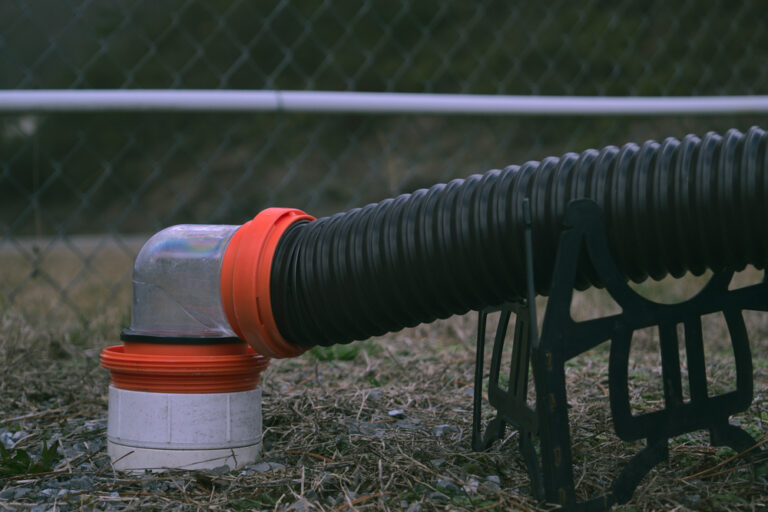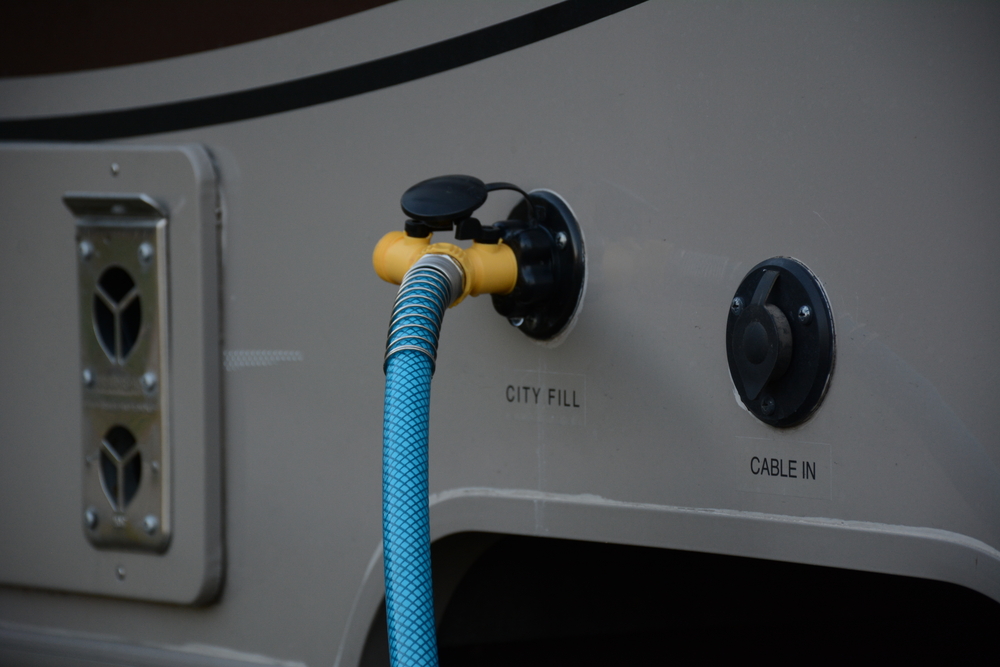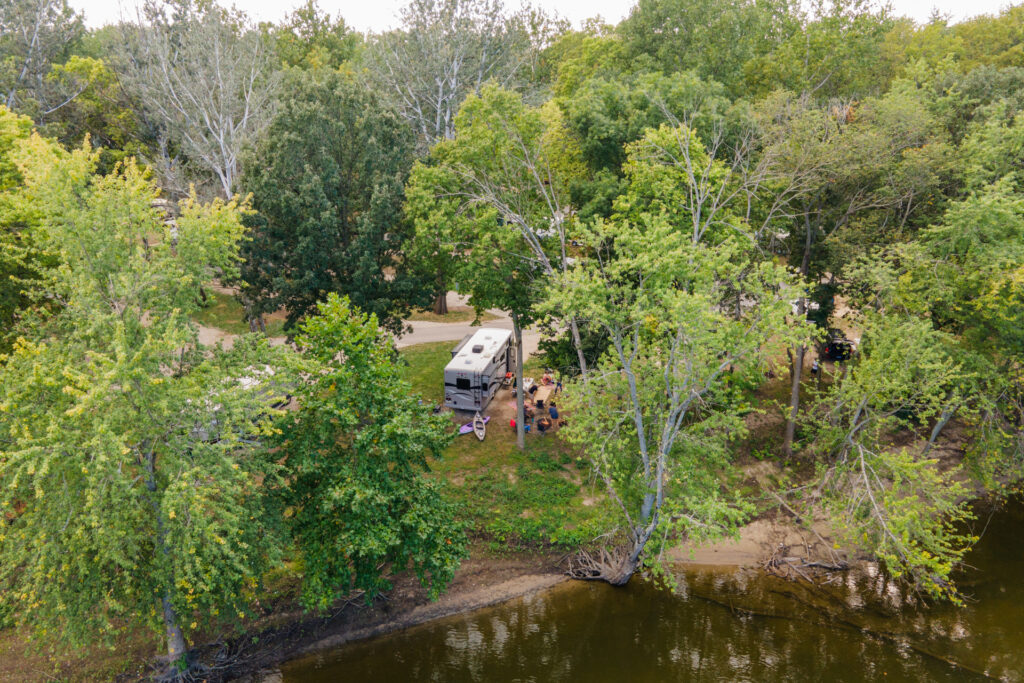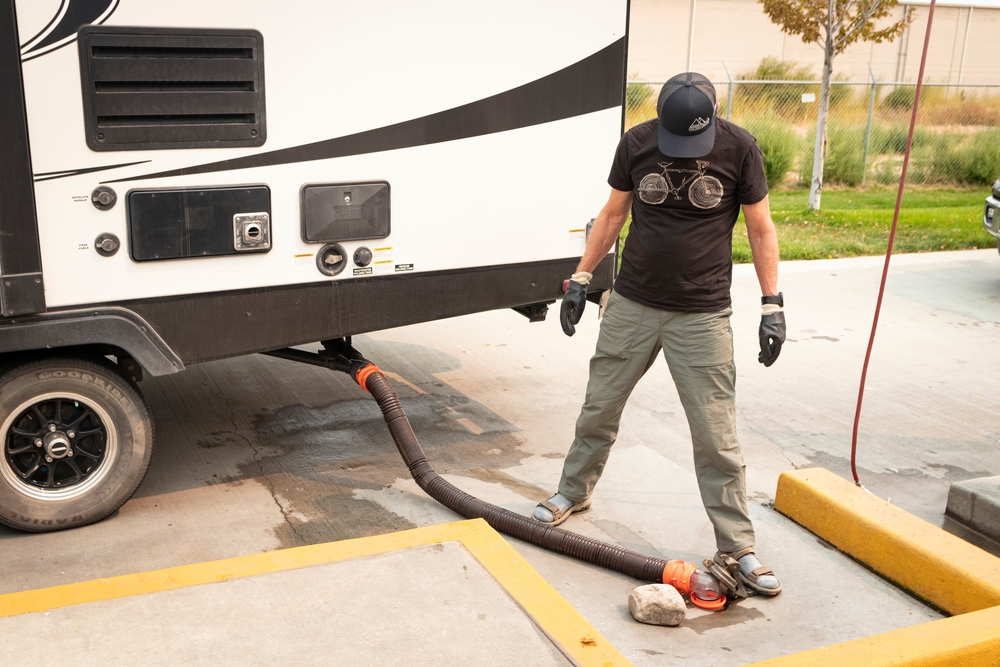
Congrats! You’ve bought a new RV, and after a quick tour, you’re sent on your way to enjoy the great outdoors. So, what did they teach you about the RV’s hoses? For most people, the answer is: “next to nothing.”
In truth, your RV uses RV hosse for a ton of important daily activities. Don’t you think it’s about time you learned what each of the hoses are for?
There Are 5 Types of Hoses – and They Should Never Meet
Your RV uses a variety of hoses which are not interchangeable. They are:
Water Hose
Propane Hose
Sewer Hose
Flushing Hose (Gray and Black Tank)
Exterior Shower Hose
Each of the RV hoses has a specific purpose and should be kept in good shape.
Your Sewer Hose – The First Hose to Replace
Whether you have purchased your RV new or used, odds are you will want to replace your sewer hose. Most units use inferior hoses as a cost-cutting method. A new sewer hose is inexpensive and comes in a variety of sizes. Full-time RVers usually carry at least two lengths of sewer hose, since the distance between your unit and your dump can vary.
After the sewer hose, the next likely upgrade is your sewer hose fitting. Fittings come in a variety of shapes and sizes, including elbow angles and basic donuts. Donuts seal the gap between your hose and the dump connection. RV parks may also want you to keep your sewer hose off the ground. If this is the case, you will need a caterpillar-like structure, which props up the hose and keeps it from moving around. These are called sewer supports and are available at any Camping World, and many Walmart stores.
Your Water Hose Is Sacred
Your water-supply hose is number one on your list of priorities. Keeping your water hose away from your sewer hose, or any other contaminated area, is key to your health.
Your water hose should be a drinking-water-safe hose. True water hoses are made of government-approved materials, which are safe for drinking water.
Hoses come in different diameters and lengths, and you may want more than one. In some cases, a long hose will help you reach a distant source to fill your water tank. In other cases, a long hose might get in the way. Carry a variety of options in the storage area of your rig. You may want to consider a water filter that allows you to connect a water filter to the hose before it connects to the RV. This enables you to filter water before it enters your tanks.
Want to limit or increase your water flow? Water hoses come in various flow ratios.
Always keep your water hose clean, inside and out. Remember, you ingest everything that comes through this hose, so be careful.
Watch for Cracks
Hoses crack more frequently than people think. Take the time to inspect your propane hose and its fittings on a regular basis. Many campers find themselves in trouble when the nights get cold, and their propane doesn’t work. A cracked hose is unsafe and can cause an uneven flow of propane.
Another important and often overlooked issue with propane is that propane tanks must be re-certified every few years. If your tanks aren’t up-to-date, a propane station will refuse to fill them. Don’t wait until you are desperate, or you might be forced to buy something new. Check your tanks and hose every season to make sure everything is safe.
The Flushing Hose Lives A Solitary Life
Your flushing hose is used to wash out your sewer hose, plus any connections to the black or gray tank. It should never be used for potable water, and it must be kept separate at all times from your drinking water hose.
Far too many RVers toss their hoses into one storage bin, only to fish them out later. Once these hoses are stored together, cross-contamination becomes a serious concern.
There are several ways to keep your hoses separate. If your rig does not already include an RV hose reel or hose carrier, you may want to consider getting one. These units help keep your hoses neat and tidy while you travel down the road.
When it comes to RV hoses, you can find almost everything at a Camping World store or on Amazon. You can update your hose, buy an RV hose carrier, buy a new RV shower hose, or grab some propane hose fittings all without leaving your home. Just be sure to know the size of your fittings, and the length of hose you need, before you order.

What is the Best RV Water Hose?
You’ll find an RV water hose on any RVing or camping checklist. After all, we need water to survive, so it’s a pretty important piece of equipment! If you have visited your local RV supply store, then you know there are many types of water hoses for your RV. These include drinking water, heated water, and potable water hoses. There are also water hoses with freeze protection, and no kink, no tangle water hoses.
We’re going to dive into these different types of RV water hoses in more depth in the next section, because the “best” water hose will vary for each RVer depending on their needs (or even their current destination).
But there’s one rule of thumb we want to ensure you have locked down before you even think about buying an RV water hose: no, your normal green garden hose will not cut it!
Garden hoses are not rated for potable water in the same way RV drinking water hoses are, and they can leech chemicals into your water supply that taste and smell bad — or which can even be toxic!
So when you’re in the market for a water hose for your RV, make sure that, first and foremost, you find one that’s specifically made for drinking, or potable, water.
Different Types of RV Water Hoses
Let’s take a more detailed look at the different kinds of RV hoses.
RV Potable Water Hose
We have already mentioned potable and drinking water hoses, as the terms are interchangeable. Often, these hoses are bright white or blue to distinguish them from typical green garden hoses.
Heated RV Water Hose
If you’ll be traveling somewhere where the temperatures dip below freezing, a heated water hose is essential to ensure your water source doesn’t freeze up. If you keep using a regular hose at sub-freezing temperatures, the hose is apt to split when the water inside it freezes, leading to a mess that’s no fun to clean up in chilly temperatures — not to mention a lack of water coming out of your taps!
Heated RV water hoses are well-insulated and often come with electric elements to physically heat the hose and keep the water inside from freezing. These are also rated for drinking water, and thus are safe to use for RVers. Heated hoses usually have a heat strip along the side of the hose. That strip is plugged into a standard 110-volt electrical connection to warm it up. The hose stays above freezing, so the water in the hose stays above freezing and flows freely into your RV. These are sometimes also called “no-freeze water hoses.”
Benefits & Features of RV Water Hoses
Of these various types of RV hoses, many also advertise additional perks, such as “no-kink,” “no-twist,” or “no-tangle.” The hoses also come in various lengths, but the most common are 6-, 12-, 25- and 50-foot lengths. If you have camped much, you know the distance from the campground water source to your RV can vary. Having different hoses with different lengths can come in handy. Ideally, you want just enough length to get you connected without putting a strain on the hose. You also do not want a curled-up hose, as they tend to kink up and restrict water flow (even when they’re advertised as “no-kink” hoses.) If you have more hose than you need, you should stretch it out to create a smooth water flow inside.
That said, it might not make sense to carry multiple hoses for your RV, in which case the best drinking water hose for an RV is the one that’s long enough to cover all your bases without being unwieldy.

RV Water Hose Pricing
RV water hose pricing does depend on the brand and type you get, and heated RV water hoses are considerably pricier than those that don’t come with insulation and heating elements. A heated RV water hose might set you back about $100, whereas an uninsulated (but potable, water-safe) RV drinking hose might cost $10-30.
What to Look For When Buying an RV Water Hose
When shopping for your RV water hose, be sure to look for one that specifically states it’s built for drinking water safety. After that, you’ll want to buy your hose based on whether or not you need a heated hose for cold-weather travels, and then you can think about extra additions like kink-free or tangle-free hoses. Some hoses also come with built-in storage devices, like a hose reel. Hose bags are also available to keep your coiled-up hose stored neatly.
A water pressure regulator is another accessory you may want to add to your RV setup. These can help ensure the city water connection isn’t too strong for your RV’s sensitive system. Water pressure regulators aren’t very expensive, with prices starting at less than $10. It’s certainly a whole lot less expensive than dealing with a plumbing system fiasco!
RV Water Hose: FAQs
Let’s take a look at some of the most frequently asked questions about water hoses!
Can I use a garden hose for my RV?
No, you cannot use your garden hose for your RV. Your general green garden hose is not safe to drink from. These hoses can release heavy metals and other toxic substances into the water that can make people sick.
Can I use a drinking hose as a garden hose?
Now, in the other direction, exchanging your garden hose for a drinking hose would work just fine. However, a drinking hose is generally going to be more expensive than a garden hose, so it might be a waste.
What is the water pressure (PSI) rating for an RV water hose?
While the water pressure rating for RV water hoses isn’t generally advertised, they’re usually rated for typical home water pressure — about 40 to 70 PSI. However, it’s still a good idea to invest in a water pressure regulator.
What are RV water hoses made out of?
Potable water hoses are made of various food-safe ingredients, such as UV-stabilized polyether-based polyurethane.
Is the water hose lead- or BPA-free?
Potable water hoses must be lead-free to be safe; double-check the label to ensure yours is BPA-free (though many on the modern market are).

What You Need To Know About Your RV Sewer Hose Storage
There are a few options for RV sewer hose storage (that do not involve bringing that stinky hose into your home). You can buy an RV sewer hose storage kit, which fits near the dump valves, contains the additional hose you need, and comes with a convenient case to store it. You can also make your own RV sewer hose storage space out of PVC tubing or a fence post or square tube hose carrier.
DIY RV sewer hose storage tube
Materials:
- 5 plastic fence posts
- 2 end caps
- 1 length of plastic gutter
- Piece of PVC pipe
- Screws
- Something to attach the tube to the RV
Instructions:
- Drill holes in the gutter and fence post to help with drainage
- Place the end caps on the PVC pipe and screw the gutter onto each cap
- Attach the fence post to the gutter
- Attach this to wherever you want your storage container
The holes you drilled in the pipe ensure that the hose will dry out as you drive.
Pre-made storage tubes
If you don’t want to make your own tube, you can also purchase them online at places like Amazon. Here are a few that get good reviews:
- The Valterra A04-5094BK EZ Hose Adjustable Hose Carrier 50”-94” includes mounting brackets and screws and is easily adjustable to your hose size and location where you want it installed.
- The Valterra A04-3460 Hose Carrier is easily adjustable and has a hinged door cap with a twist latch closure at each end.
Hopefully, this guide has given you more information about the important RV hoses that make your rig run and operate well!

